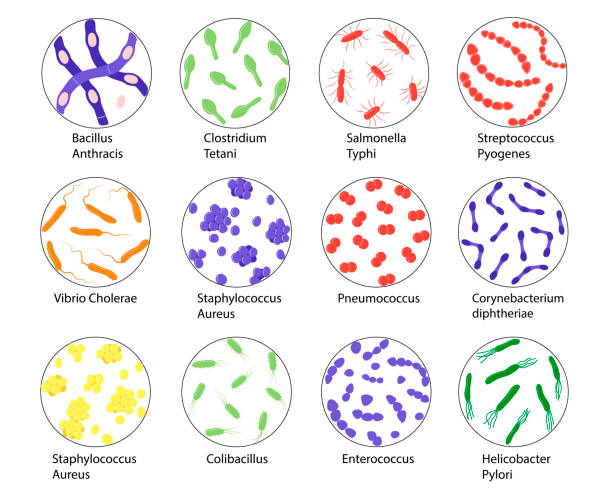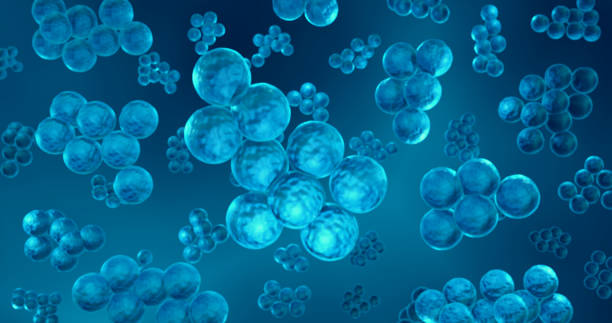Staphylococcus Infections
 Most people have heard of staph infections but may not know how common they are; however, Staphylococcus bacteria are present on the skin and in the noses of around 30% of healthy people. While most staph infections are relatively minor, some can lead to severe complications.
Most people have heard of staph infections but may not know how common they are; however, Staphylococcus bacteria are present on the skin and in the noses of around 30% of healthy people. While most staph infections are relatively minor, some can lead to severe complications.
Staphylococcus bacteria can cause various infections, including skin infections, food poisoning, and pneumonia. The most common type of infection is cellulitis, a skin infection that causes redness, swelling, and pain; however, there can be symptoms such as boils, abscesses, and impetigo.
While most staph infections can be treated with antibiotics, some strains of the bacteria are resistant to these medications. In severe cases, hospitalization may be required.
TYPES OF STAPH BACTERIA
- Methicillin-resistant Staphylococcus aureus (MRSA)
- Vancomycin-resistant Enterococcus (VRE)
- Multidrug-resistant Pseudomonas aeruginosa (MDRP)
- Multi-drug resistant Acinetobacter baumannii (MRAB)
Drug-resistant strains of staph bacteria are often acquired in hospitals or other healthcare settings. These strains can cause severe infections and are difficult to treat.

Prevention is the best way to avoid these infections. Infected people should be isolated from others to prevent the spread of the bacteria. Good hygiene, including hand washing and keeping wounds clean, is essential.
TYPES OF STAPH INFECTIONS.
The most common are skin infections, ranging from mild to severe. Other types of staph infections include:
- Bacteremia: This is an infection of the bloodstream. It can cause sepsis, a potentially life-threatening condition.
- Pneumonia: This is an infection of the lungs. It can be severe, especially in people with weakened immune systems.
- Osteomyelitis: This is an infection of the bone. It can be excruciating and may require surgery to treat.
- Septic arthritis: This is an infection of the joint. It can be excruciatingly painful and may require surgery to treat.
SIGNS AND SYMPTOMS OF STAPH INFECTION
The signs and symptoms of a staph infection depend on the type of infection. However, some common symptoms include
- Fever
- Chills
- Weakness
- Muscle aches
- Sweating
- Headache
- Rash.
COMMON BACTERIAL COMPLICATIONS
Staph infections can cause several serious complications, including:-
- Bacteremia: This is an infection of the bloodstream. It can cause sepsis, a potentially life-threatening condition.-
- Pneumonia: This is an infection of the lungs. It can be severe, especially in people with weakened immune systems.-
- Osteomyelitis: This is an infection of the bone. It can be excruciating and may require surgery to treat.-
Toxic shock syndrome: This is a potentially life-threatening condition that occurs when toxins produced by certain types of staph infect the bloodstream. Treatment for staph infection typically involves the use of antibiotics. In some cases, surgery may also be necessary. You may need to be hospitalized if you have a weakened immune system.
TREATMENT OF STAPHYLOCOCCUS INFECTIONS
Treatment for staph infection typically involves the use of antibiotics. In some cases, surgery may also be necessary. You may need to be hospitalized if you have a weakened immune system.
Antibiotics are the most common form of treatment for staph infections. Many different antibiotics can be used to treat staph infections, and your doctor will choose the one that is best for you based on the type of infection you have and your health history.
In some cases, surgery may be necessary to remove infected tissue or to drain an abscess. If you have a severe lung infection, you may need to be hospitalized to receive intravenous (IV) antibiotics treatment.
If you have a staph infection, practicing good hygiene and keeping your wound clean and covered is essential. You may need to take special precautions to prevent staph infections if you have a chronic illness or a weakened immune system. You should also avoid sharing personal items with others, such as towels, razors, or clothing.
COMMON ANTIBIOTICS AND THEIR INDICATIONS USED FOR STAPHYLOCOCCUS INFECTIONS
- Penicillin: Treats staphylococcal infections that are not penicillin-resistant. However, bacteria eventually become resistant to this antibiotic, which is not always practical.
- Methicillin and other antibiotics in the penicillin family (such as oxacillin): Used to treat penicillin-resistant staphylococcal infections. These antibiotics are more likely to cause side effects than penicillin.
- Cephalosporins: A class of antibiotics related to penicillins, used to treat both penicillin-sensitive and penicillin-resistant staphylococcal infections.
- Daptomycin: is an intravenous (IV) antibiotic used to treat severe staphylococcal infections, including those resistant to other antibiotics.
- Vancomycin: is used as a third-line drug for treating severe staphylococcal infections. This drug is usually reserved for hospital patients because of the potential for serious side effects.
Do you need a similar assignment done for you from scratch? We have qualified writers to help you. We assure you an A+ quality paper that is free from plagiarism. Order now for an Amazing Discount!
Use Discount Code “Newclient” for a 15% Discount!
NB: We do not resell papers. Upon ordering, we do an original paper exclusively for you.




